As often happens, after my initial observations of some nice new birds in the arid region of Brazil, I quickly exhausted the supply of heretofore unseen birds and spent several days watching the same cast of characters over and over again. In this case, that did not bother me at all, since I knew that my route was taking me to the home territories of two very special bird species, both of which are extremely beautiful and rare, existing only in two very small geographic locations in northeastern Brazil. Of course, my desire to see those two species was opposed somewhat by the lengthy and tedious process of getting to those two separate areas, which, while not exactly remote, are nonetheless quite a long distance from anywhere else that might seem interesting. That required me to travel for several days under the scorching Sun, over terrain that was more hilly than anywhere else I had been during this section of the route, and use roads that were usually decent, but sometimes not. If my observations were successful it all would have been worth it, but if they weren’t, well, I simply would have been despondent.
The first of these species is only found on the eastern slopes of the Araripe Plateau, in the Ceará State of Brazil. That landform rises up gently from the west, to an elevation of above nine hundred meters above sea level, but drops precipitously to a much lower level on its eastern edge. That shape leads to increased rainfall accumulation and groundwater runoff on the eastern slopes, forming an oasis, if you will, surrounded by the much more parched Caatinga biome. Such a biological island
is a perfect place for a unique species to develop, which is apparently what had happened with the bird I was seeking. What is even more amazing is that, while the people who have lived on that hillside had certainly known of its special bird for a very long time, that species was only cataloged by ornithology in 1996!
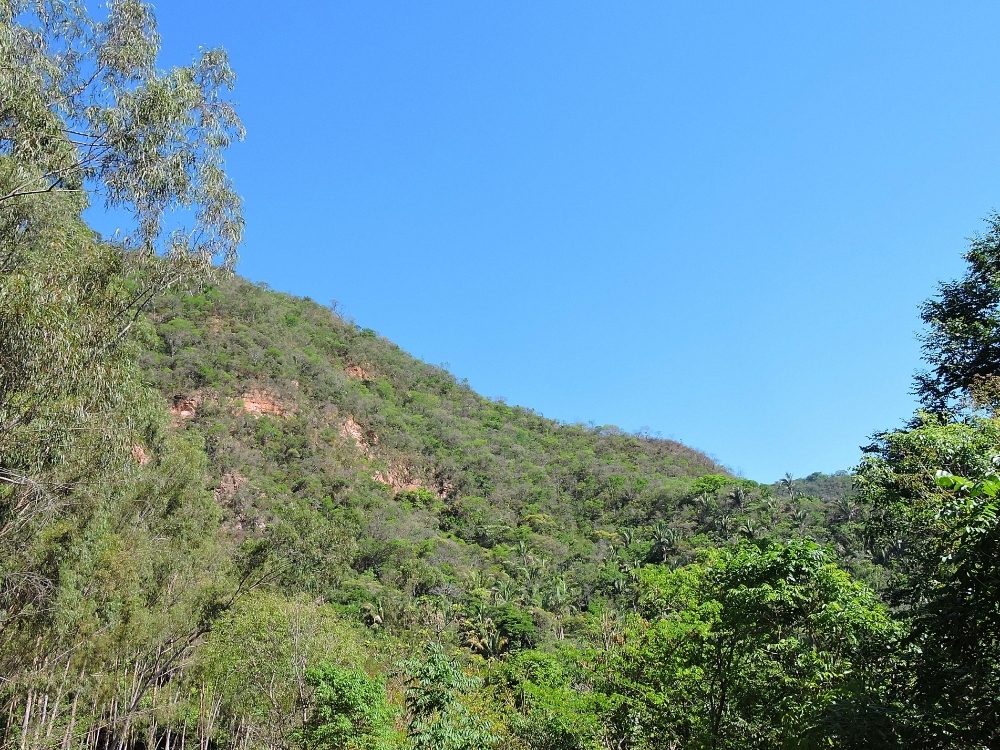
Soon after that, an aquatic theme-park, Parque Arajara, was built just at the spot where the bird was first identified, causing much concern to those people who have sought to protect the species. Fortunately, the birds seem to be holding on, for now at least, and the park does make for an immensely useful base for visiting birders. For some unknown reason the park is only open on weekends, but the management has opted to keep the lodging open all week. That means that any birder arriving on a weekday, as I fortunately did, will be housed in a tranquil and beautiful spot, just meters away from where the prime target species can be easily seen.
The Park and Lodge are surrounded by attractive gardens of tropical plants, and so a variety of bird species can be found there. However, the total number of species did not seem to be especially great, and many birds proved to be uncooperative regarding photographs. Nevertheless, I was able to add Orange-Headed Tanager, Pectoral Sparrow, Planalto Hermit, and Reddish Hermit to my list, as well as Yellow-Breasted Flycatcher.
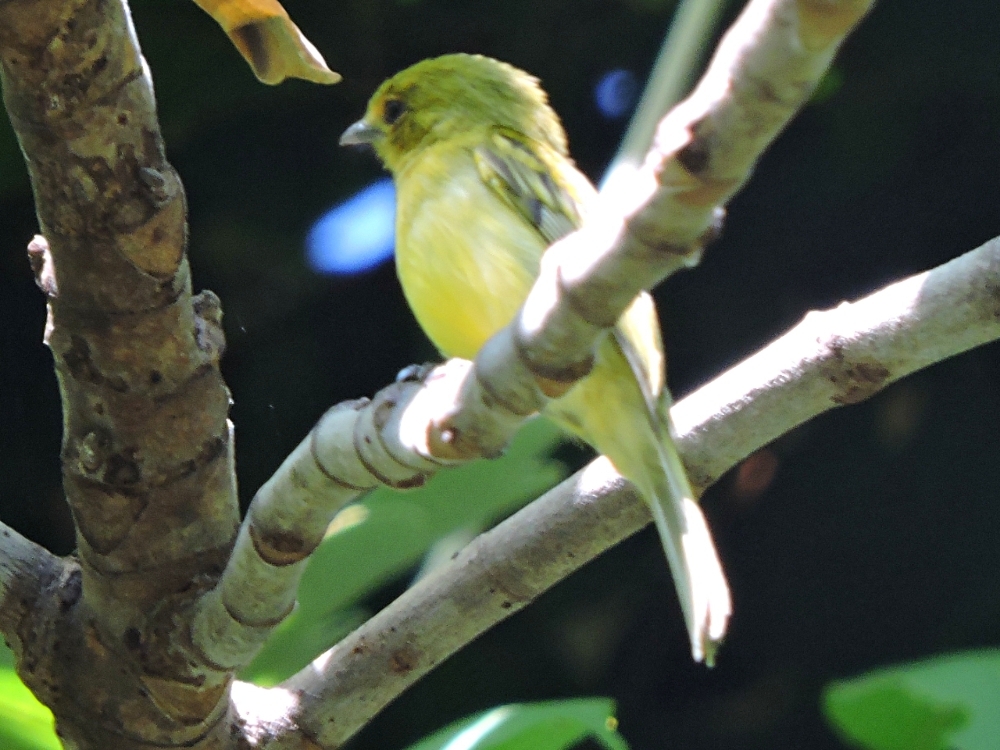
I certainly would not have gone through all that effort just to see another tyrant flycatcher. While the bird I was seeking is also small, that is where the similarities end. Just after I arrived on a Thursday evening, and mentioned that I hoped to see the famous bird of the park, one of the staff walked me down to where it would normally be found. Just fifty meters down a flagstone path, and one minute later, we had it. Araripe Manakin! This image, taken just before sunset, handheld, with a half-second exposure, shows a little ghosting, but is at an angle that captures the most important facets of the male bird's appearance, its striking white and black body, and beautiful scarlet head and crest.
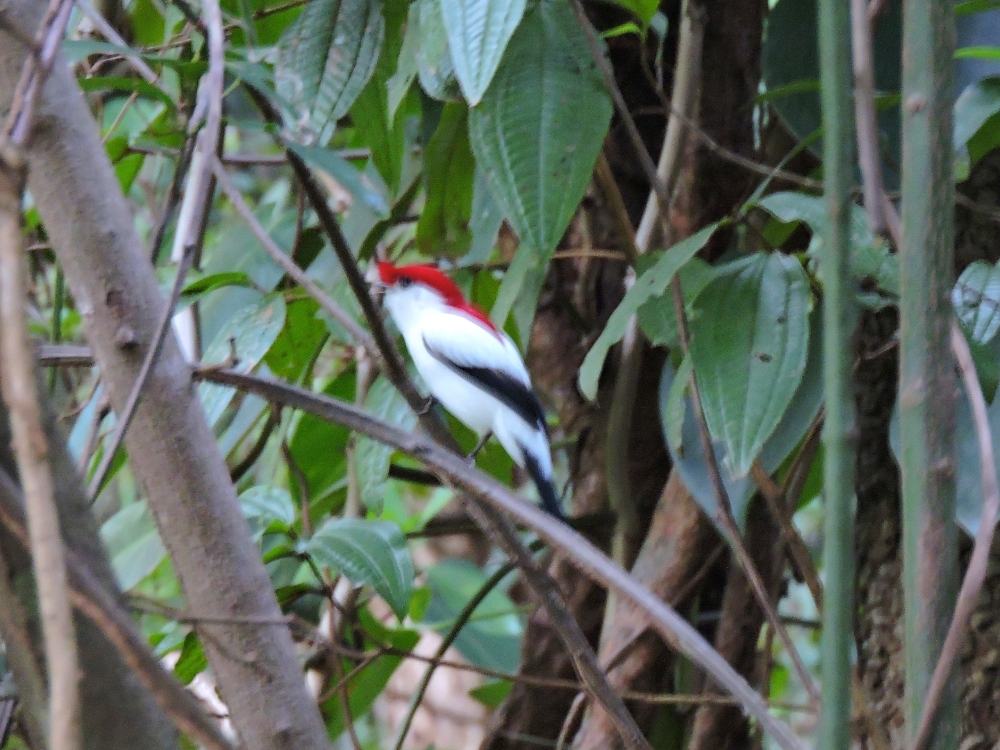
The next morning I hoped to find the bird again in better light. That turned out to be very simple, as its song, which is much more distinctive than many other manakins, easily gave away its position. They also seem to enjoy moving from one side of the path to the other and back, and at one point one almost flew into my head when doing that.
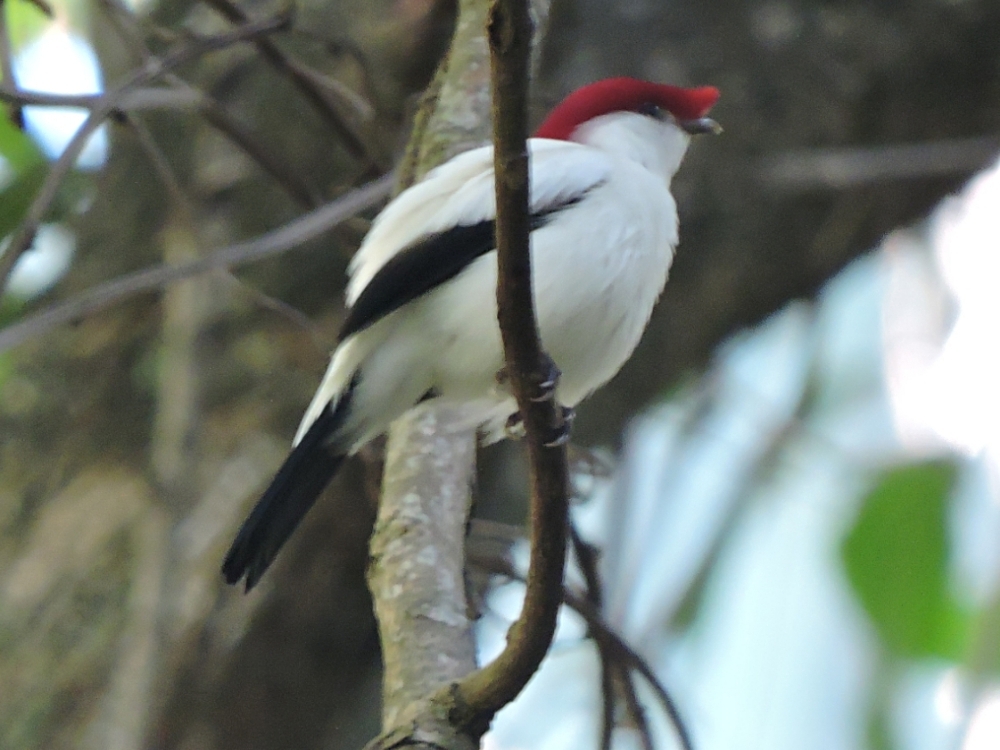
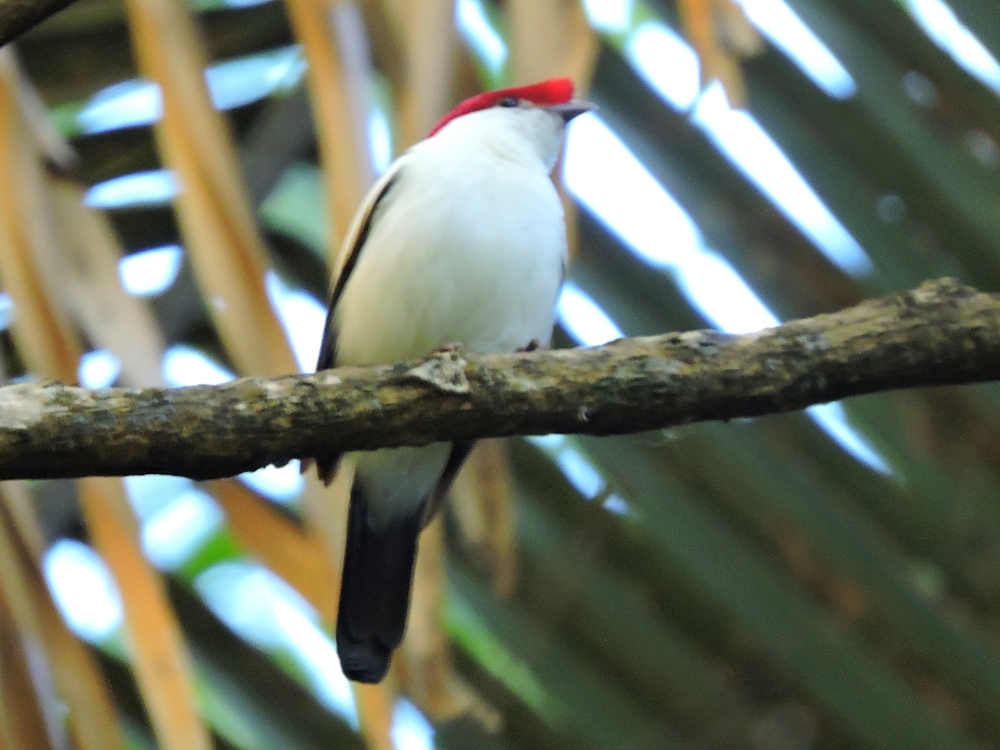
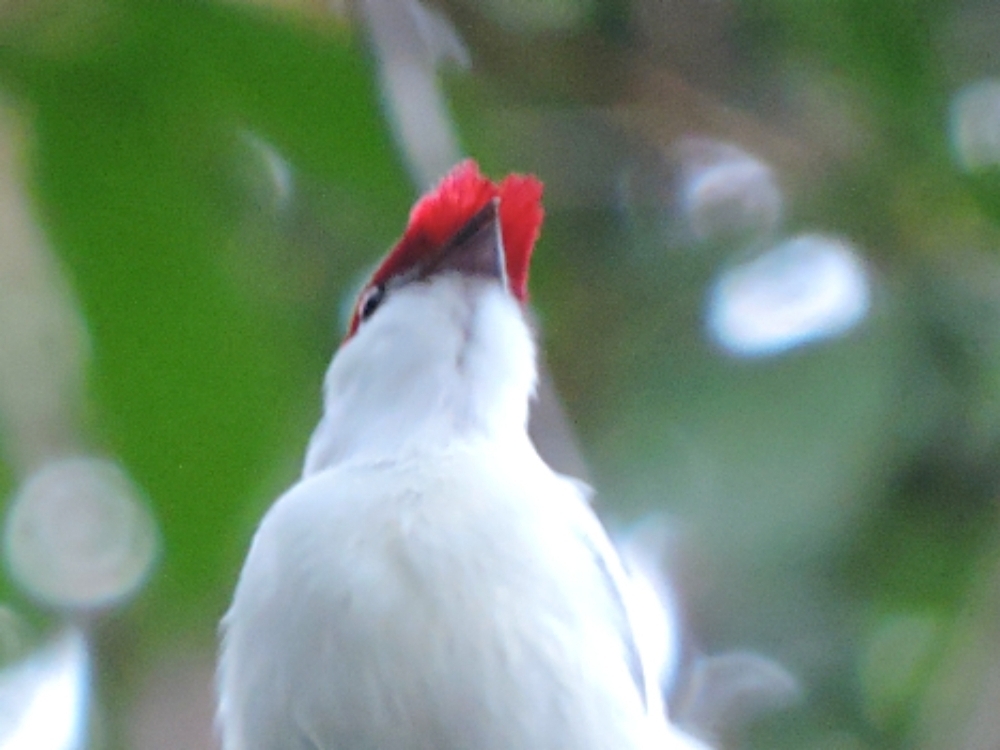
While a quest for a rare bird that involves a long trek to a remote piece of habitat, with uncertain chances for success, can often be appealing, in this case I definitely appreciated the chance to easily see a great bird and get some rest at the same time. The second special bird I was seeking was equally rare, and to reach its home range was similarly tedious and tiring, but it was also easy to see once I was there. However, the birds themselves could not be any more different in their appearance. This bird had been known for a long time, but only because it occasionally turned up in pet markets of the east coast. It was not until 1978 that the home base of the wild population was located, in the State of Bahia. Specifically, in an area south and east of the town of Canudos, where large areas containing red sandstone cliffs are found, reminiscent of Colorado or Utah, which the birds use for roosting and nesting, and where their favorite food, the nuts of the rather uncommon Licuri Palm, can also be found. With these rather strict requirements, the birds were already considered to be critically endangered by the time their home was discovered.
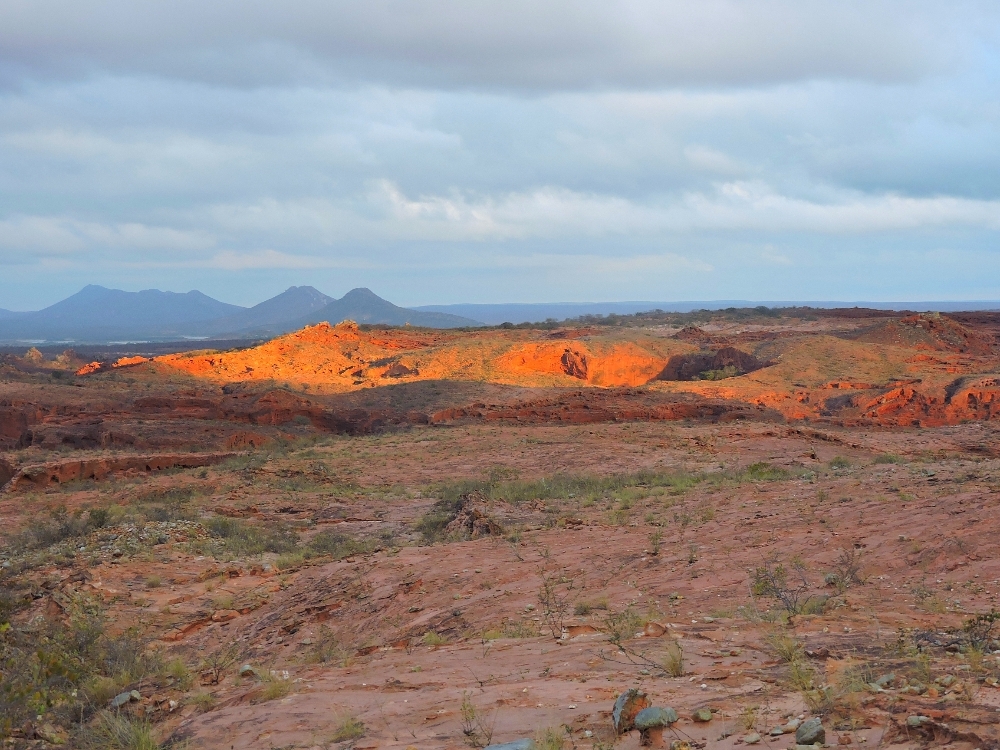
Today their range is owned and managed by a NGO, and visitors can see them by arranging to stay at a very basic guesthouse at the site, which was also a bit of a slog for me to reach. I did make it, however, and hoped to find several interesting birds in the area while I was there. However, apart from the main species I sought, the only other new bird I identified was Lesser Wagtail-Tyrant, which seemed almost tame, but whose cryptic plumage kept me from finding it with my camera. Once again, another tyrant just wouldn’t be enough, and very early the next morning a ranger took me out to a particular canyon where the star attractions roosted in fairly large numbers. Indigo Macaw!
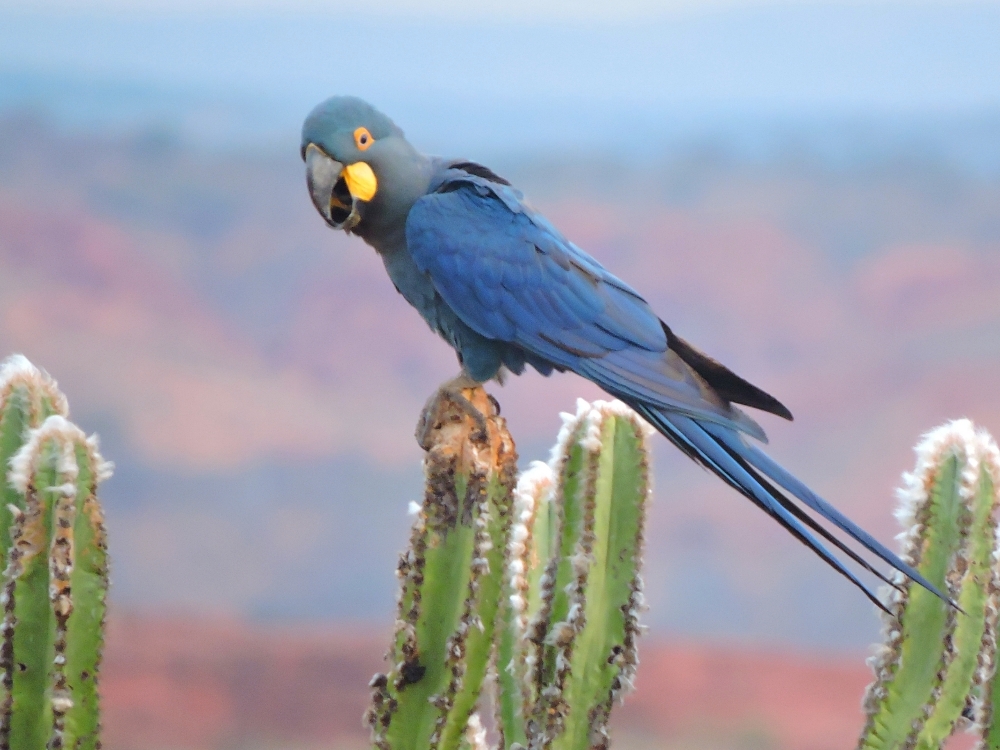
Most of the time, they are seen in pairs.
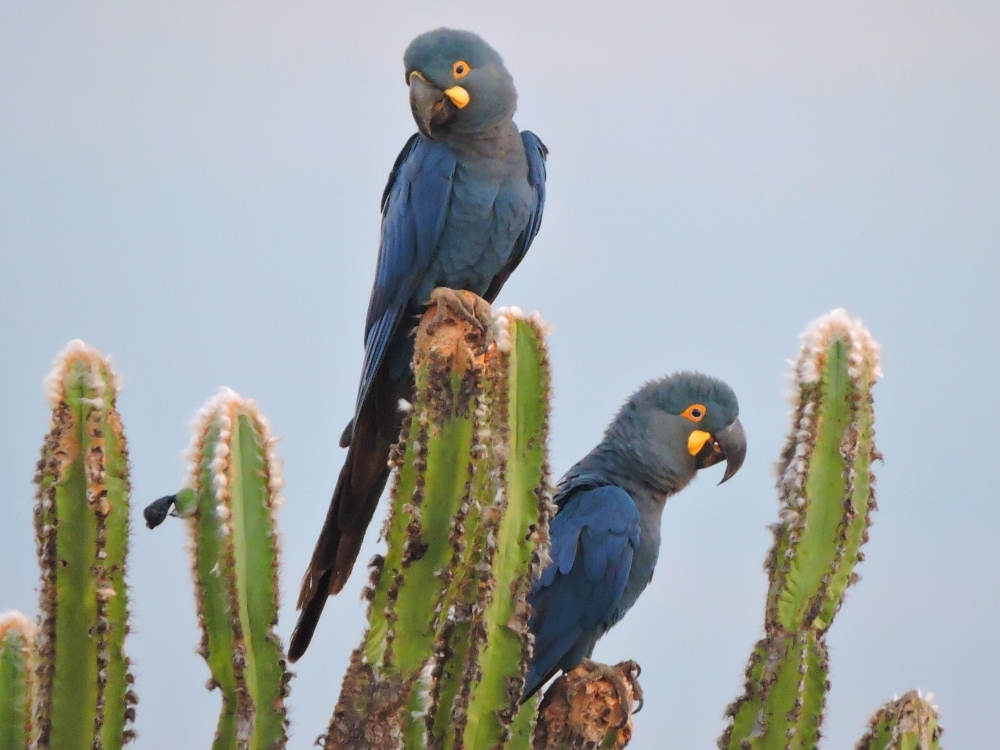
And they enjoy spending their free time in the nooks and crevices of canyons like this one.
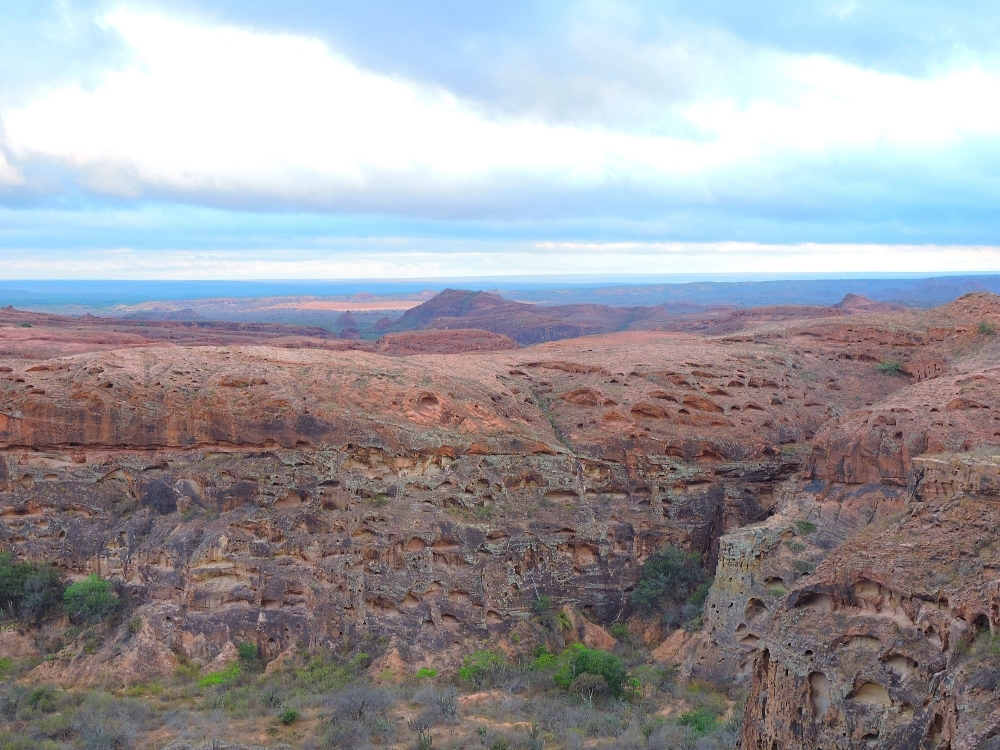
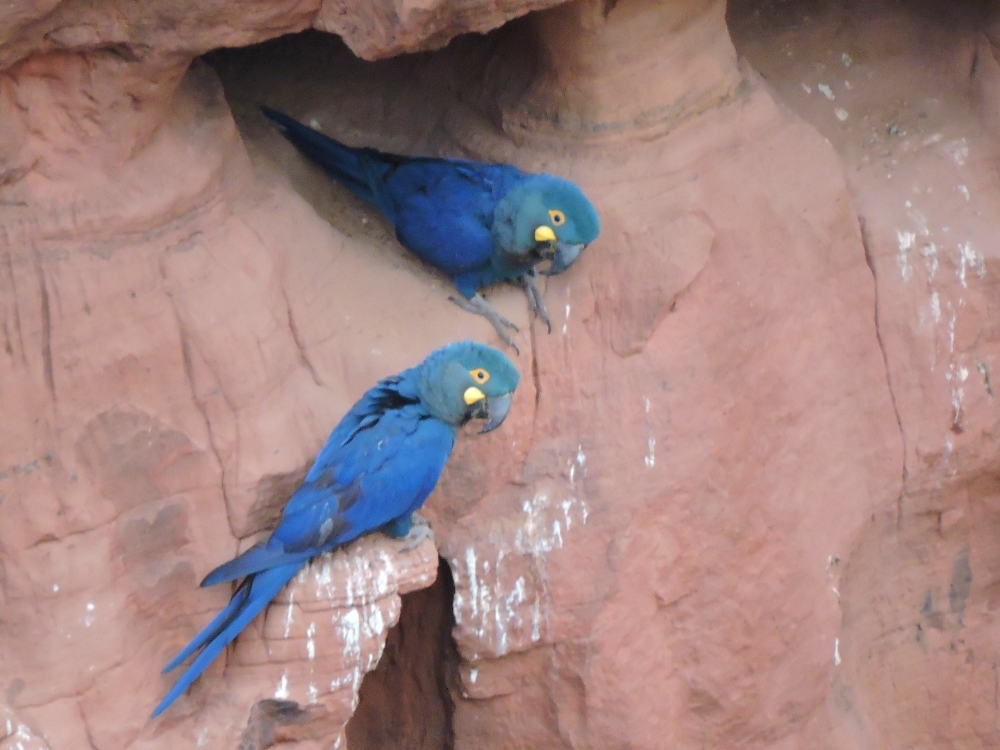
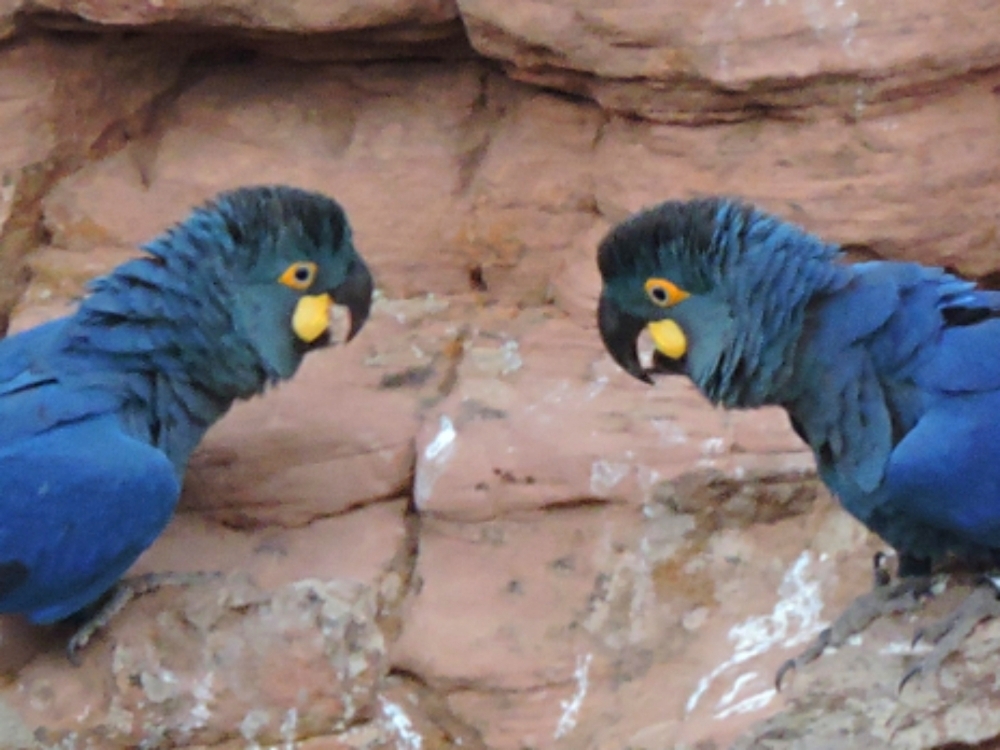
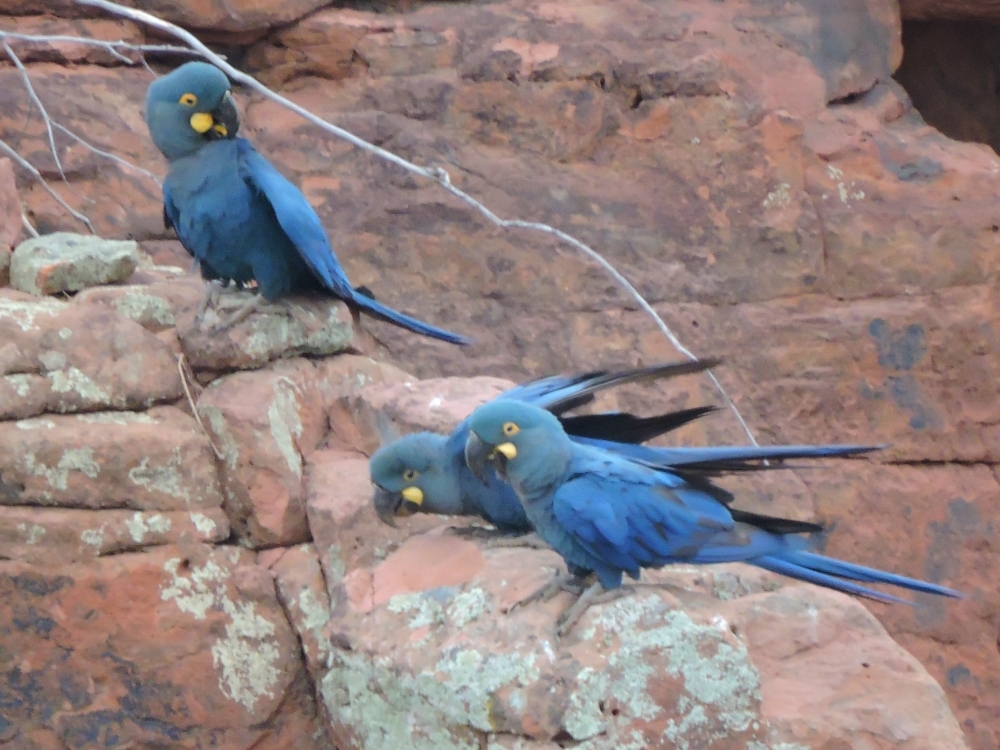
During the morning they often take off to reposition themselves on the cliff face, or simply fly away to their feeding grounds. Either way, there were often many in the air at once, making it a little hard to estimate their numbers. However, I would say that there were between fifty and one hundred birds in the area that morning, which would represent a significant fraction of the total population.
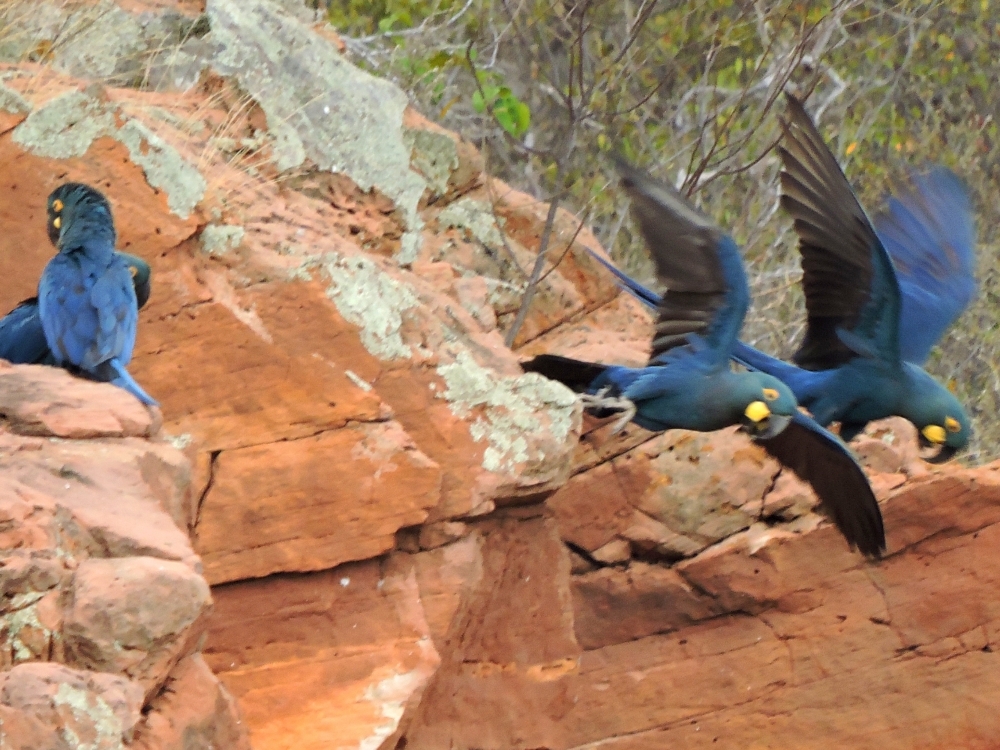
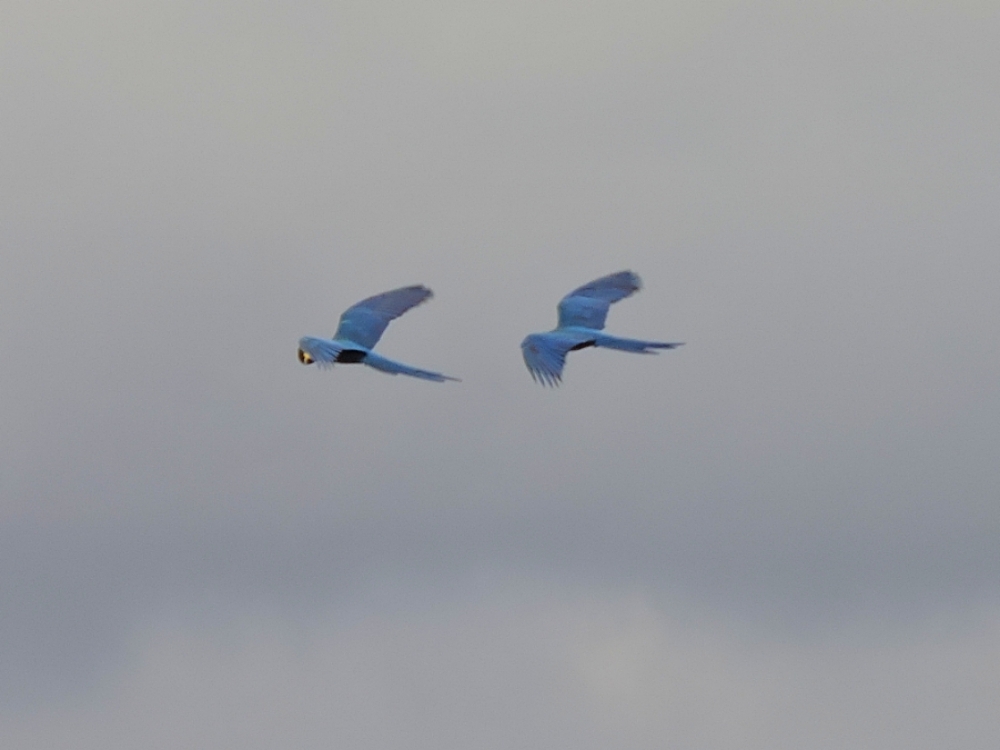
With such a small number remaining, this species will remain vulnerable for some time, which is a shame because they are amazing birds.
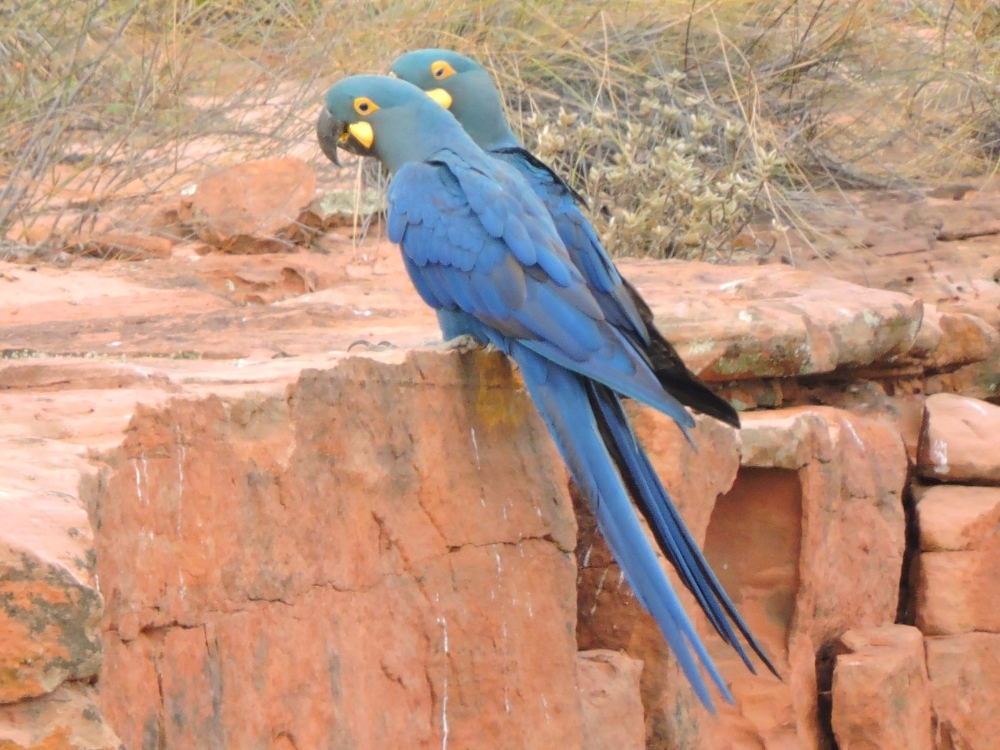
Every continent has bird species that are widespread and locally abundant. Often times these are nice birds in their own right, but, even then, observers can eventually grow tired of seeing them. With World2 bringing me to the neotropics again, my even longer stay during the Tour of Gondwana, and a few shorter trips, I have probably seen enough Great Kiskadees, Blue-Gray Tanagers, Smooth-Billed Anis, and Black Vultures to last a lifetime. That makes me appreciate such species as the two I presented here, with their restricted ranges, even more. What a World it would be if every valley, or every isolated mountain, had its own unique bird species! Of course, not all of those would be as spectacular as these two, but many would, and we would all be richer for it. It is unfortunate, however, that many species with small ranges today exist in that way because humans have wiped out most of their original habitat, and they are therefore vulnerable to any number of ecological catastrophes that could quickly wipe them out forever. For the Araripe Manakin and the Indigo Macaw, efforts to protect them have already begun, but nothing about the future can be certain and we may yet lose them. I am grateful to have had the opportunity to observe them and to appreciate their beauty, which still enriches our World.